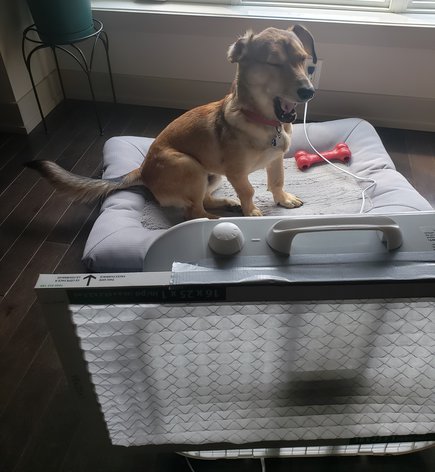I grew up in the 1990s and have fond memories of Captain Planet, a typical Saturday morning cartoon with a literal planet-saving superhero summoned by five teenagers to clean up beaches, put out forest fires and fight pollution. Standard supervillains would be illegal dumpers, poachers and loggers – easily villainized caricatures of society’s impoverished who are often forced to perform these jobs.
These supervillains represented a moral extreme of environmental destruction brought on by industrial greed that had to be combatted. What remained unrepresented was the contribution of the health care industry towards environmental destruction. After all, it would be morally challenging to villainize physicians and nurses who actively work towards improving lives and well-being.
The reality is that climate change driven by human activity exists and is already leading to gross changes in weather patterns with direct consequences to human health. This year alone, severe heat in BC has led to a spike in heat-related deaths, which naturally forces humans to mobilize more resources and intensify efforts to tame the unpredictable environment. In Alberta, our collective action is reflected in record demands on our electrical grid and an insatiable appetite for AC units.
This intensified response is mirrored in health care with both clinicians and patients paralyzed by inertia as we overlook the impacts of our medical interventions on the environment. It is not hard to find examples of our cyclical situation. A patient presenting with an asthma exacerbation brought on by smoke from an out-of-province forest fire will need more disposable inhalers, medicines and carbon-intensive investigations/labs/imaging which feed back into the cycle of climate change.
This places us in an impossible and self-defeating situation. The CMAJ stated in 2019 that Canada’s health care system is among the worst when it comes to greenhouse gas emissions, contributing to 23,000 years of life loss annually. And yet we still have great difficulty framing our own industry’s contribution to the early death of the same individuals we are paradoxically trying to save. I am guilty of this cognitive dissonance. Particularly in this past year while under duress of unseen microbial threats to my life, environmental concerns are at the bottom of my hierarchy of anxieties as I don the armour of disposable plastics wrapped neatly within the Russian doll of packaging.
Periodically, when we can muster the activation energy, we are usually able to mount a mild response consisting of the holy environmental trinity of Reduce, Reuse and Recycle. Technology does exist to help us with this: the support of virtual care has reduced some of our physical footprint, but without ongoing clinical diligence, we run into the same issues of overtreating and overprescribing.
I have spent some time scouring the internet for a green technological health care solution that addresses these same systemic environmental problems; however, most of them are prohibitively expensive, impractical to implement and almost always focus on a top-down approach to change. Problems driven by individual collective action need solutions that involve a similar but opposite action. This is highlighted intuitively with COVID-19 where transmission caused by physical interaction is subsequently reduced with physical distancing. Top-down solutions such as mass vaccination programs still require collective individual uptake for long-term effectiveness.
As of early August 2021, approximately 24% of eligible Albertans have not had their first dose of any COVID-19 vaccine. But more optimistically, it means that 76% of eligible Albertans have had their first shot. This is a positive and hopeful sign. When encouraged on an individual level, most individuals will do what is required to preserve the health of others and the environment.
So, I present to you not necessarily a solution, but a tool. It’s a practical low-tech, low-cost gadget to help your patients deal with a direct impact of climate change while encouraging individual action: the DIY Box Fan Air Filter.

Step 1: Obtain box fan.
Step 2: Obtain furnace filter.
Step 3: Duct tape filter to fan.
The fan can be built intuitively and uses common items that can be obtained with minimal manufacturing requirements compared to more expensive and over-engineered air purifiers.
It is difficult to make environmental villains of ourselves while also playing the role of the hero. In the fight against climate change, there are no superheroes and no supervillains. There will be no Captain Planet to instantly clean our waters or tame our fires. Our collective individual response will dictate how we fight climate change and individual physician action can nudge all of us in the right direction.
Editor’s note: The views, perspectives and opinions in this article are solely the author’s and do not necessarily represent those of the AMA.
Banner image credit: Daniel Roberts Pixabay.com
